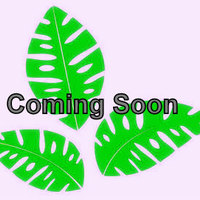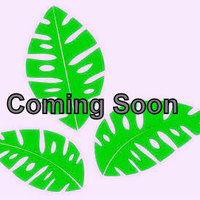Common name: Corkwood
Other common names: Batwing coral tree, Bean tree, Cork tree, Grey corkwood, Heilaman tree
Description
Corkwood is an Australian flowering tree with a vast and scattered distribution extending from the coast to the dry interior, mainly in the subtropical and tropical parts of the continent.
It is fast-growing and may reach heights of up to 30 m (98 ft) in parts of its range, with a straight trunk up to 85 cm (2.8 ft) in diameter and without branches for most of its height. However, it is more typically 5 to 15 m (16 to 50 ft) tall with a moderately branched, narrowly rounded crown.
The branches have sharp, stout thorns, also sometimes present on the trunk. The bark is light brown, thick, corky and deeply grooved on older trees.
Leaves are three-lobed in a curious shape, resembling a bat in flight, made up of three dull green leaflets, each 8 to 10 cm (3 to 4 in) wide. They are semi-evergreen to deciduous depending on the climate at the location, falling to the ground in the dry season and being replaced by new leaves in the rainy season.
Flowers are bright salmon-red, 4 cm (1.6 in) long, with petals strongly curved back and stamens protruding. They are borne in loose clusters at the ends of the branches, coming into bloom in the dry winter through spring season in its native range and are at their best display on leafless trees.
Fertilised flowers are followed by green bean-like seedpods, which become dry and pale brown with one to three bright orange-red seeds inside.
Use
Corkwood is occasionally cultivated as an ornamental for its showy salmon-red flowers and unusual, curiously shaped leaves. The flowers produce abundant nectar that nourishes nectar-feeding birds in its native range.
The wood is pale brown, soft, spongy and lightweight, averaging around 180 kg per cubic meter (11 lbs per cubic ft). These properties make it a suitable cork substitute. It has been used for making insulation boards, model aircraft, polo balls and flotation products, including surfboards, wakeboards and floats for fishing nets. Being easy to carve, it is used by indigenous Australians to make 'Coolamons', which are lightweight bowls or carrying vessels with curved sides resembling a small canoe.
The hard orange-red seed are sometimes used in bead craft.
Climate
Grows naturally in dry to moderately humid subtropical and tropical climates, generally areas with annual lows of 12 to 25°C, annual highs of 24 to 36°C, annual rainfall of 200 to 1800 mm and a dry season of 4 to 11 months.
Growing
New plants are mostly started from hardwood cutting, though they can also be raised from seed, with scarification recommended to improve germination.
Corkwood is adapted to well-drained clay, loam and sand soils of a moderately acid to alkaline nature, generally with a pH of 5.0 to 8.0. It has poor tolerance to slow-draining or waterlogged soils or strongly windy conditions. It performs best on sites with exposure to full sun.
Problem features
Corkwood is listed as a weed in at least one reference publication. Still, there does not appear to be any record of it anywhere as a serious weed or invasive species.
The leaves, seed and bark are reported to be highly toxic, capable of causing serious illness or death if ingested. Symptoms include nausea, respiratory distress and com
Where it grows
References
Books
-
Boland, D. & Brooker, I. & McDonald, M. W. 2006, Forest trees of Australia, 5th ed., CSIRO Publishing (Ensis), Melbourne
-
Floyd, A. G. 1979, N.S.W. rainforest trees, 2nd. ed., Forestry Commission of NSW, Sydney, Australia
-
Holliday, I. 2002, A field guide to Australian trees, 3rd revised editon, New Holland Publishers, Frenchs Forest, New South Wales
-
Mathias, M. E., 1982, Flowering plants in the landscape, University of California Press, Berkeley
-
Oakman, H. 1995, Harry Oakman's what flowers when : the complete guide to flowering times in tropical and subtropical gardens, University of Queensland Press, St. Lucia, Queensland
-
Randall, R. P. 2002, A global compendium of weeds, R.G. and F.J. Richardson Press, Melbourne
-
Rauch, F. D. & Weissich, P. R. 2000, Plants for tropical landscapes : a gardener's guide, University of Hawaii Press, Honolulu
Articles, Journals, Reports and Working Papers
-
Johnson, A. & Johnson, S. 2006, Garden plants poisonous to people, New South Wales Department of Primary Industries (NSW DPI), Orange, New South Wales



